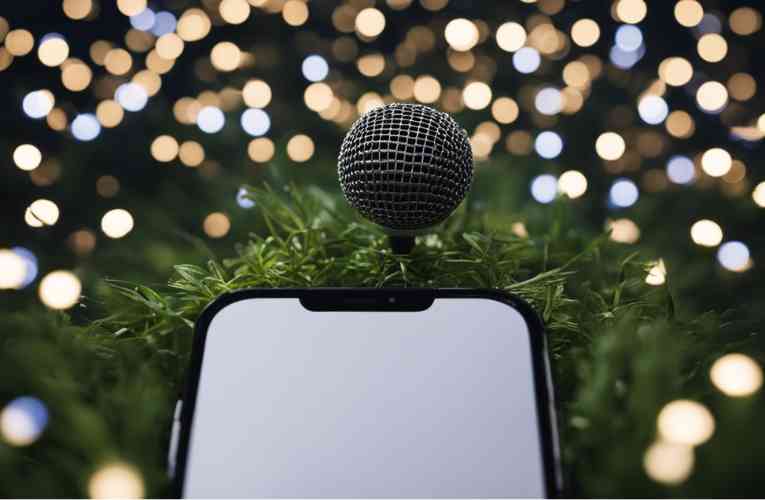Are you having trouble using an external microphone with your iPhone? It can be frustrating when you’re trying to record audio and your iPhone won’t recognize the external microphone. Fortunately, there are several reasons why this might be happening and several solutions you can try to fix the problem.
One possible reason why your iPhone won’t use an external microphone is that the microphone is not compatible with your iPhone. Another reason could be that the microphone is not properly connected to your iPhone. Whatever the reason, we’ll explore some possible solutions to get your external microphone working with your iPhone and enhance your audio recording quality.
Key Takeaways
- Your external microphone may not be compatible with your iPhone.
- Check that your microphone is properly connected to your iPhone.
- There are several solutions you can try to fix the problem.
Table of Contents
ToggleWhy won’t my iPhone use external microphone?
If you’re having trouble using an external microphone with your iPhone, there could be a few different reasons why. Here are some things to check:
Checking iPhone Compatibility
First, make sure that your iPhone is compatible with the external microphone you’re trying to use. Some microphones may only work with certain models of iPhone, or may require a specific adapter or cable. Check the manufacturer’s website or user manual to see if there are any compatibility requirements you need to be aware of.
Ensuring Proper Connection
Once you’ve confirmed that your microphone is compatible with your iPhone, make sure that it’s connected properly. If you’re using an adapter or cable, double-check that it’s plugged in securely and that there are no loose connections. If you’re using a wireless microphone, make sure that it’s paired correctly with your iPhone and that the batteries are charged.
Adjusting iPhone Settings
If your microphone is compatible and connected properly, but still not working, you may need to adjust some settings on your iPhone. Go to Settings > Privacy > Microphone and make sure that the app you’re using to record audio has permission to access the microphone. You may also need to adjust the volume or gain settings on your microphone to ensure that it’s picking up sound correctly.
Updating iOS Software
Finally, if none of the above steps have resolved the issue, it’s possible that there’s a software problem with your iPhone. Make sure that your iPhone is running the latest version of iOS by going to Settings > General > Software Update. If there’s an update available, download and install it to see if that resolves the issue.
Related Posts:
- Using external mic with iPhone bias voltage
- Verify the functionality of an external microphone on your iPhone
- Exploring Belkin splitter iPhone external mic functionality
- Connecting an External Mic to Your iPhone: A Complete Guide
- External Mic Support on iPhone 8 Plus
Enhancing Audio Recording Quality

If you are experiencing issues with the sound quality of your iPhone recordings, there are several things you can do to enhance the audio recording quality. Here are a few tips that can help you get the most out of your iPhone’s microphone.
Selecting the Right Microphone
The type of microphone you use can have a significant impact on the quality of your recordings. If you are using an external microphone, it’s essential to make sure that it is compatible with your iPhone and that it’s the right type of microphone for your recording needs.
Some external microphones come with either a 3.5mm jack, a USB-C connector, or a lightning connector. It’s crucial to check if your microphone is compatible with your iPhone model or if you need an adapter.
Additionally, some microphones are designed for specific recording situations. For example, if you’re recording a podcast or a vlog, you may want to consider using a directional microphone that can capture your voice clearly while minimizing background noise. On the other hand, if you’re recording music, you may want to use a condenser microphone that can capture a wider range of frequencies and produce a more natural sound.
Optimizing Recording Environment
The environment in which you record can also affect the quality of your recordings. When recording audio, it’s important to minimize background noise as much as possible. If you’re recording in a noisy environment, consider using a windscreen or a pop filter to reduce unwanted noise.
Moreover, make sure that nothing is blocking the microphone on your phone when recording audio. This includes cases and accessories that can cover the microphone and affect the sound quality. Also, try to record in a quiet room with minimal echo and reverberation to get the best possible sound quality.
Related Posts:
- Quality External Microphones for iPhone
- Do You Really Need an External Mic for iPhone X
- iPhone recording with external mic and Audacity guide
- External Microphone Setup for GarageBand on iPhone
Conclusion
In summary, if your iPhone is not using an external microphone, there are several potential causes. First, ensure that the microphone is compatible with your device and that it is connected properly. Second, check that the microphone is not blocked by debris or dust.
Third, ensure that your iPhone’s software is up to date. Fourth, try resetting your iPhone’s settings. Finally, if none of these solutions work, consider contacting Apple support or taking your device to an authorized repair center.
Frequently Asked Questions
How can I enable an external microphone on my iPhone?
To enable an external microphone on your iPhone, you need to connect the mic to your phone’s lightning port. Once connected, your iPhone should automatically recognize the external mic and switch to it as the default audio input device. If your iPhone doesn’t automatically switch to the external mic, you may need to adjust the audio input settings in your phone’s control panel.
What settings should I adjust to use an external mic with my iPhone?
To use an external microphone with your iPhone, you need to adjust the audio input settings in your phone’s control panel. Go to Settings > Privacy > Microphone and make sure that the app you’re using to record audio has permission to access your microphone. If the app isn’t listed, contact the app developer for support.
Why isn’t my iPhone recognizing my external microphone?
If your iPhone isn’t recognizing your external microphone, there may be a problem with the microphone itself or with the lightning port on your iPhone. Try disconnecting and reconnecting the mic, and make sure that it’s properly plugged in. If that doesn’t work, try using a different microphone or testing your mic on another device to make sure that it’s working properly.
How do I troubleshoot an external microphone that’s not working on my iPhone 14?
If your external microphone isn’t working on your iPhone 14, try the following steps:
- Make sure that the mic is properly plugged in to your iPhone’s lightning port.
- Check the microphone’s battery level and make sure that it’s fully charged.
- Restart your iPhone and try connecting the mic again.
- Check your iPhone’s audio input settings to make sure that the mic is selected as the default input device.
- Try using a different microphone or testing your mic on another device to make sure that it’s working properly.
What steps can I take if my external mic isn’t working on my iPhone 13?
If your external microphone isn’t working on your iPhone 13, try the following steps:
- Make sure that the mic is properly plugged in to your iPhone’s lightning port.
- Check the microphone’s battery level and make sure that it’s fully charged.
- Check your iPhone’s audio input settings to make sure that the mic is selected as the default input device.
- Try using a different microphone or testing your mic on another device to make sure that it’s working properly.
- If none of the above steps work, contact the manufacturer of your microphone for support.
Why is there no sound from my Movo mic when connected to my iPhone?
If there’s no sound coming from your Movo mic when connected to your iPhone, try the following steps:
- Make sure that the mic is properly plugged in to your iPhone’s lightning port.
- Check the microphone’s battery level and make sure that it’s fully charged.
- Check your iPhone’s audio input settings to make sure that the mic is selected as the default input device.
- Try using a different microphone or testing your mic on another device to make sure that it’s working properly.
- If none of the above steps work, contact the manufacturer of your microphone for support.








